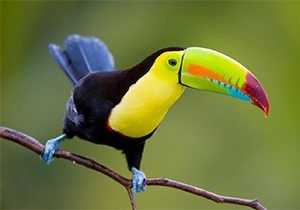
Blue Ridge Mountains primary resource
Discover how physical geography shapes the Earth
This primary resource introduces children to a natural environment that is different from their own. Discover how physical geography shapes the Earth. What is a mountain? How tall is the highest peak of the Blue Ridge Mountains? Where in the world are the Blue Ridge Mountains found?
Pupils will learn about the physical features of mountains and how they are formed in our National Geographic Kids’ mountains primary resource sheet.
The teaching resource can be used in study group tasks for learning more about the kinds of wildlife that make the mountains their home. It could be used as a printed handout for each pupil to review and annotate, or for display on the interactive whiteboard to share the information and photographs included in the resource for class discussion.
Activity: Ask children to copy the ‘How mountains are made’ diagram into their own workbooks and label it, using the information from the fact box to help them. Pupils could then write down the steps that it takes to form a mountain and annotate the diagram by labelling the parts of the mountain forming with the step number that takes place there. Pupils could use the resource sheet as a starting point for their own research on the natural landscape and the kinds of wildlife that lives there. They could use this to produce a leaflet about the Blue Ridge Mountains and why they make a good home for some species of wildlife.
N.B. The following information for mapping the resource documents to the school curriculum is specifically tailored to the English National Curriculum and Scottish Curriculum for Excellence. We are currently working to bring specifically tailored curriculum resource links for our other territories; including South Africa, Australia and New Zealand. If you have any queries about our upcoming curriculum resource links, please email: schools@ngkids.co.uk
This Geography primary resource assists with teaching the following Geography objectives from the National Curriculum:
- Pupils should extend their knowledge and understanding beyond the local area to include the United Kingdom and Europe, North and South America. This will include the location and characteristics of a range of the world’s most significant human and physical features.
National Curriculum Key Stage 2 Geography objective:
- Pupils should be taught to: describe and understand key aspects of: physical geography, including: climate zones, biomes and vegetation belts, rivers, mountains, volcanoes and earthquakes, and the water cycle
This Geography primary resource assists with teaching the following Social Studies Third level objective from the Scottish Curriculum for Excellence:
- Having investigated processes which form and shape landscapes, I can explain their impact on selected landscapes in Scotland, Europe and beyond.
Scottish Curriculum for Excellence Fourth level Social Studies objective:
- I can explain how the interaction of physical systems shaped and continue to shape the Earth’s surface by assessing their impact on contrasting landscape types.
Download primary resource
More Like

Birds Memory

Your Amazing Eyes!

Cuba facts!









LEAVE A COMMENT
THANK YOU
Your comment will be checked and approved shortly.
WELL DONE,
YOUR COMMENT
HAS BEEN ADDED!
COMMENTS
CUSTOMIZE YOUR AVATAR